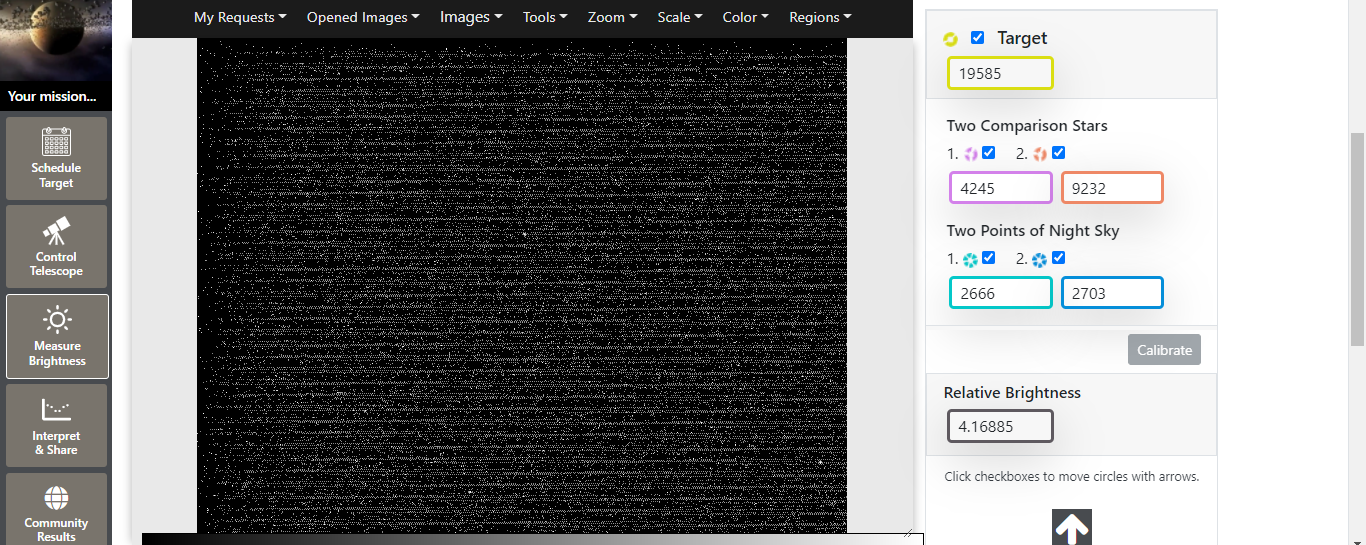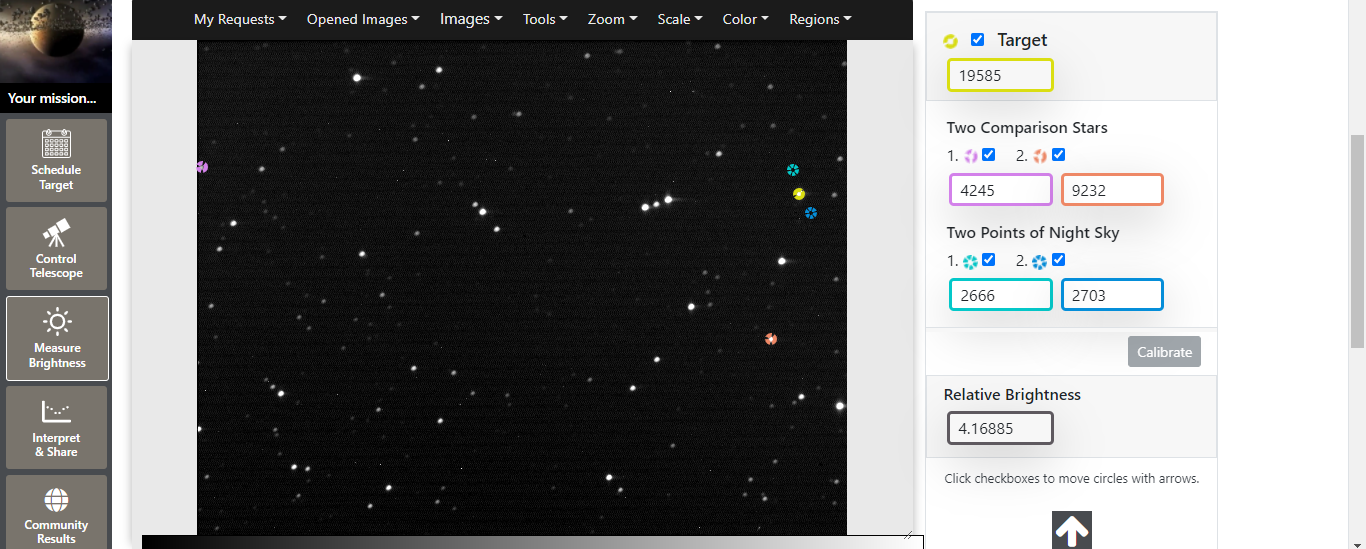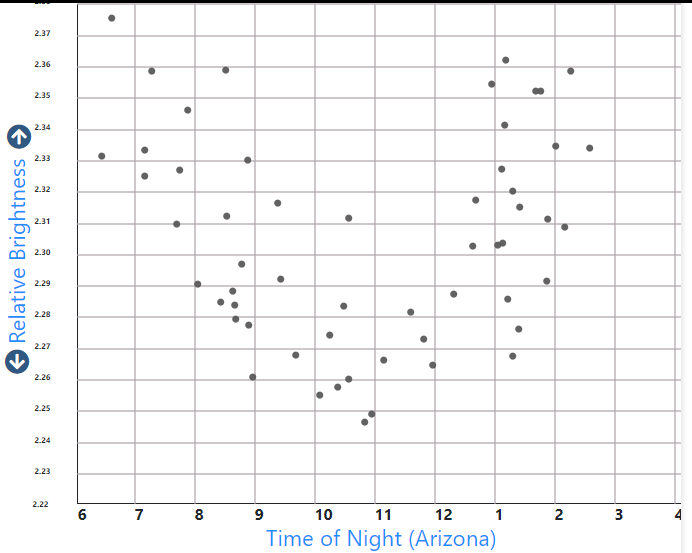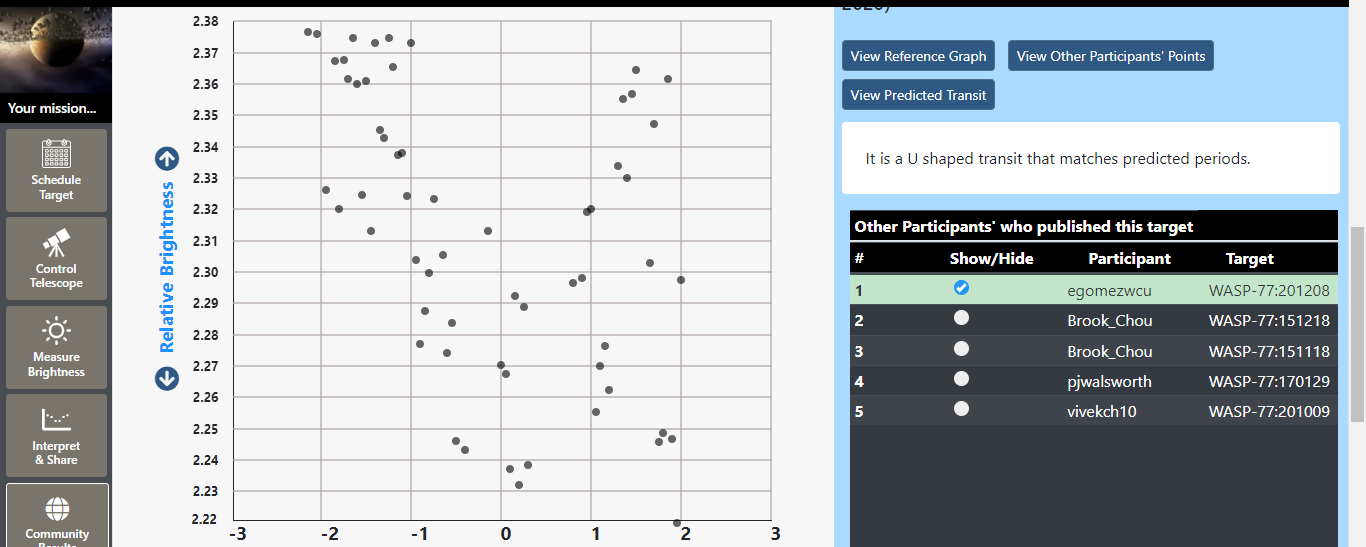In this section I am going to present the analysis of the exoplanet WASP-77 in the DIY Exoplanet Search page, with the steps that our tutor gave to us.
First, go to the previous page, sign up and go to the DIY Tools section.
There, you have to choose a date and an exoplanet, and ask a telescope to take the pictures you want, at one or more hours and minutes. I have done the analysis with the data from the Cecilia in Amado telescope, AZ, in mountain standard time, at 10:00 pm, with a 60 second exposure and clear filter.
Then click on take image, go to your images and start the measurement.
First, take a look at the three video tutorials and read the five steps provided by the web.
Once you have learned how to manipulate this platform, you can start the analysis. In my case, I started finding my planet thanks to the "finder" tool.
Then I set the markers:
Once these markers are placed and properly adjusted with the "magnifier" tool, I proceeded to calibrate three different but similar images of the same situation, these, by means of an obscure image, I was able to calibrate them, adjusting the markers perfectly, in order to achieve exact results.

(Dark Image)

(Image of WASP-77)
And finally, I just clicked the "calculate and record" button and I got this graphic.

According to this graph, the relative brightness is in 2.2475M. From this information I can see that I have investigated an exoplanet with a mass of 1,75MJ and a radius of 1.25RJ. These results are similar to those I found on the internet, more specifically on the exoplanet.eu page. Where they say the mass is 1.76MJ and the radius is 1.21RJ.
My exoplanet is described as a gas giant, and I know it is because my data is very close to the internet results.
To finish, comparing my results with those of other people from egomezwcu on (Tue Dec 08 2020), I see that my results are not really wrong as the relative brightness is similar to the others.

(Light Curve of Community)